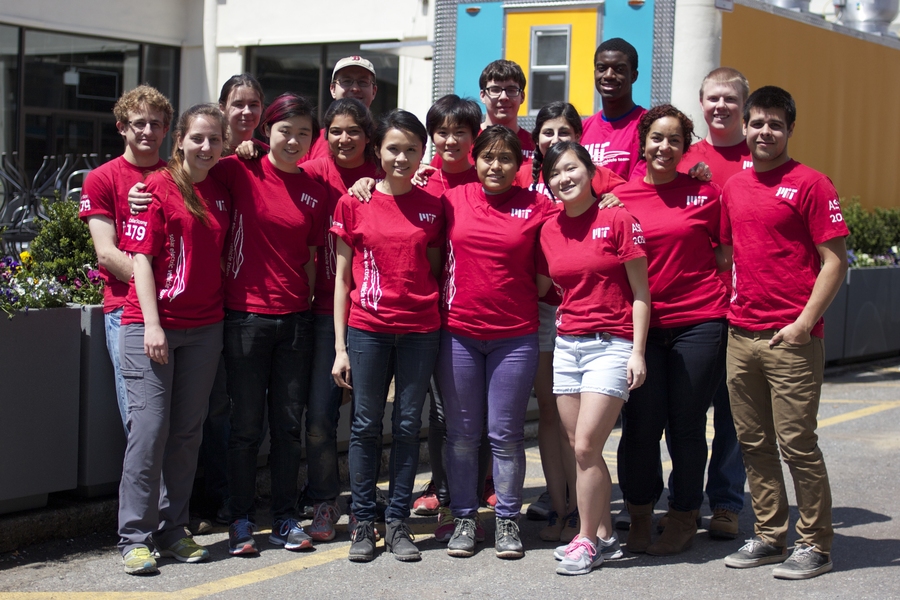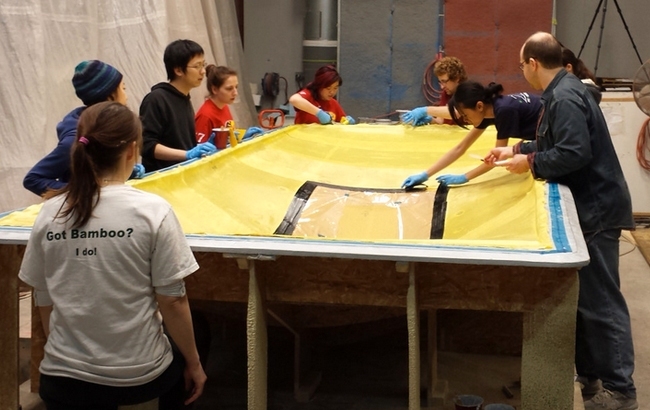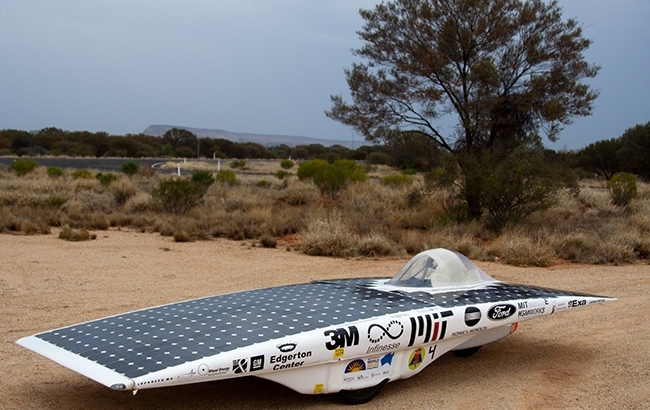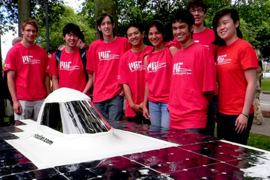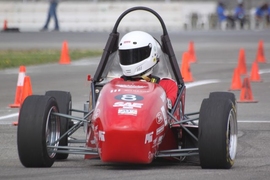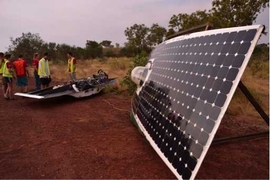An MIT team that boasts some notable alumni — including U.S. Chief Technology Officer Megan Smith ’86, SM ’88 and D-Lab founder and lecturer in mechanical engineering Amy Smith ’84, SM ’85 — has its eyes fixed on the 2015 Bridgestone World Solar Challenge, a 3,000-km race across the Australian Outback that will take place in October.
The MIT Solar Electric Vehicle Team, founded in 1986 by James Worden ’89, working under the auspices of the Edgerton Center, is building the 13th iteration of their solar car. Named after the brightest star in the northern celestial hemisphere, "Arcturus" is the team’s first venture into building a four-wheeled vehicle per the race requirements for the Bridgestone World Solar Challenge.
As the race from Darwin to Adelaide draws near, the team — a crew of 12 women and eight men — is preparing for their adventure. “Not one undergrad has been on the trip to Australia before so that’s kind of exciting for us,” says team captain Rose Abramson ’15, who joined the team as a freshman.
In the 2011 Veoila World Solar Challenge, the team faced a setback when its lithium-ion battery pack never made it to Darwin due to air-transportation issues. This year, however, things will be different: The team has worked closely with Professor Yossi Sheffi, the Elisha Gray II Professor of Engineering Systems and director of the Center for Transportation Logistics. With Sheffi’s help, the team secured generous sponsorship from United Parcel Service, and "Arcturus" — weighing in at 400 pounds plus a 50-pound battery pack — will be shipped by sea, saving the team upwards of $20,000-$25,000.
The high percentage of women on MIT's Solar Electric Vehicle Team is notable. Abramson remarks that for other teams at competitions, “it might not be as common to have as many women on the team. Our team is smaller than a lot of other teams that participate in these competitions. Our entire team goes to races, because our team is only 20 people and people have multiple roles. You’ll have to do both engineering as well as fundraising and logistics. People often work across disciplines, which makes for a richer experience.”
Like the many moving parts in a vehicle, there are many movable parts working together to support the team. Along with Institute and corporate sponsors, Emily Ranken, Phyllis Carter, and Fabiola Hernandez at Environmental Health Services are working closely with the team on transportation logistics. Team members have also benefited from the expertise of Custom Composite Technologies in Maine where founder Steve Hassett has provided the team with equipment, workshop space, and expertise, enabling the team to lay up the body of the car. In addition, the team recently received its latest round of encapsulated solar cells with lamination provided by Fraunhofer Center for Sustainable Energy Systems.
Abramson is eager for the race to begin. “Driving straight through the outback is really more than just a simple race. My goal is for 'Arcturus' to drive the entire 3,000-km distance. It would be great to be in the top-10 finishers.”
Individuals interested in supporting the team can adopt a solar cell that will power "Arcturus." For more information, visit the Solar Electric Vehicle Team "Adopt-a-Cell" site.
